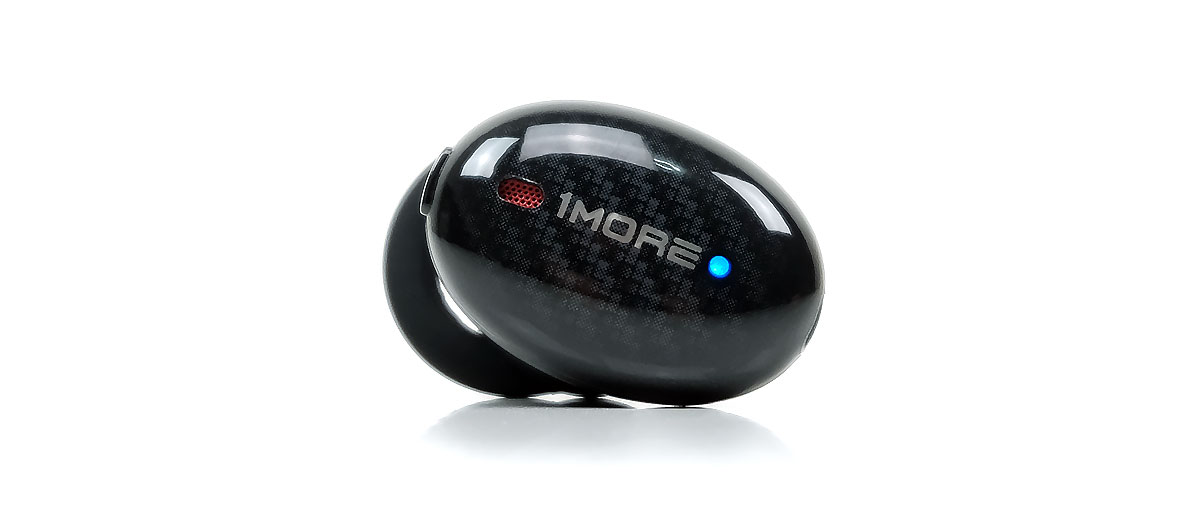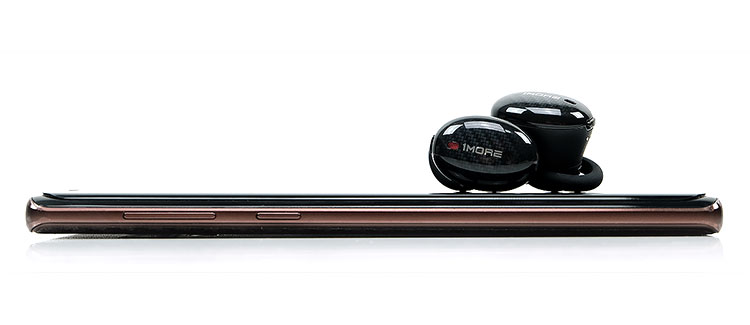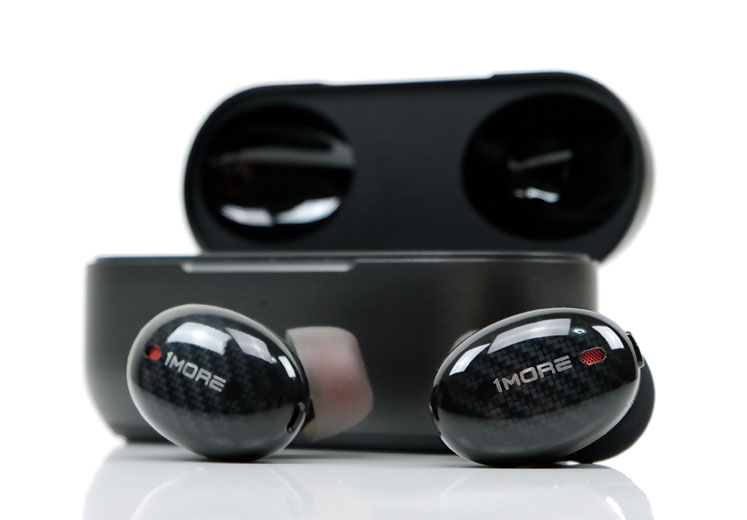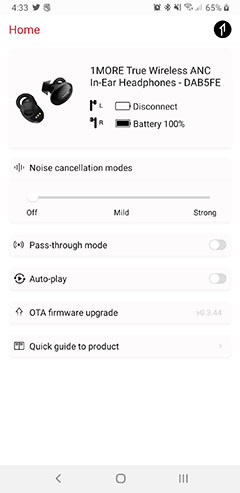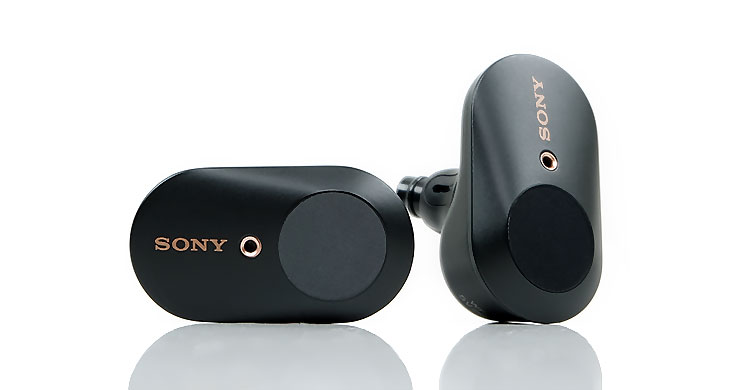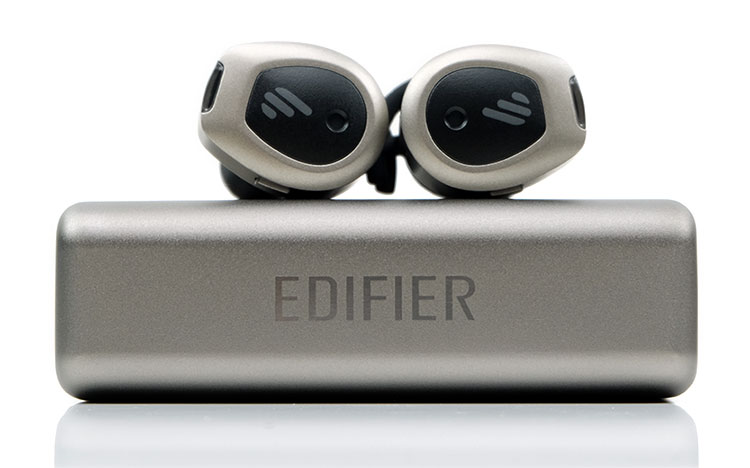Sound Impressions
Summary
Well for a start, the True Wireless ANC performance is light years ahead of the KZ T1, unless you like overly romanticized instrumental and vocal timbre.
This is a fairly robust and powerful presentation characterized by a deep and plentiful low-end with plenty of long decay dynamic driver qualities and a bright quick and clean BA top-end.
It has that modern V-shaped solid bass fundamental and a deep cut into the lower-mids to prevent bleed and smear. There is some warmth but contextually, for example, compared to the new Edifier TWS TB, its mid-bass hump is not terribly extended.
Around the 800Hz marker it starts to rise which means vocals stand out nicely which is what you want with these types of signatures. A booming low-end can often veil a vocal if there is no lift in the mids to upper mids and that is what the 1MORE successfully avoids.
Even compared to the likes of the Sony WF-1000XM3 the vocal presence on the 1MORE True Wireless ANC sounds much richer and further forward, especially around the 1-3k marker.
Timbre
Of course, this is a dual driver so the timbre has some mixed driver contrast in it. You can hear the BA timbre take precedence over the dynamic driver for the highs and the enhanced bass fundamentals of the dynamic driver dominate sub-500Hz. In between, the mids instrumental/vocals have plenty of contrast but at times can lack body or sound very forward.
For example, percussion presence is forward, clean, and light in weight. The signature is tight and fast with a short decay but also a shade on the lean side. Overly dynamic passages of higher-pitched percussion and some breathy higher-pitched vocals can sizzle more than I would like but nothing you could describe as distracting or just downright wrong.
There is enough pull on the upper harmonic order for midrange notes to sound well defined and nowhere near as lush as the KZ T1 which tended to push back the BA influence to the point of not existing.
Staging
The overriding impression of the 1MORE True Wireless ANC is of a vivid large soundstage where the key elements are forward and easy to hear rather than overly holographic and complex.
Thus, you get excellent depth but a very forward low-end. Its bass closeness just lacks a shade in terms of refined layering and openness and it does dominate the lower-mids but not in a warm and fuzzy way.
Rather, the lower-mids suck out and pushed upper mids keep the instrument timbre on the cool side with imaging tucked in behind a more dominant vocal presence. Percussion positioning is to the fore with above-average height allowing them to breathe and sound ‘exciting’.
This is the type of staging that really plays up to modern casual listening demands so bass guitar plucks, kicked drums, bass synths, vocals, and percussion are very much emphasized. It also gels perfectly with dark synth-wave moody numbers.
ANC Coloration
I know this one is a topic and there was a firmware update to correct some of the concerns. I never got to spend time with the previous version so I can only speak about the latest firmware upgrade.
If I had to crudely condense the change in sound signature when switching on the ANC then its a bit like moving from an open back headphone to a closed design. The low-end gets overly emphasized and the mids and treble lose a bit of presence and clarity as a result. I suspect the mids and treble dB on the curve have not changed that much and rather it just gets overpowered by the bass dB.
If you want crushing bass then the ANC DSP is the way to go, especially for pounding EDM where you will not need too much ‘audiophile’ balance. Personally, I gravitate to the more balanced non-ANC sound.
Wireless Performance
Pairing
The 1MORE pairing is a two-stage process if you are intent on using the 1MORE app. Pairing in the traditional fashion is pretty similar and fast with the 1MORE True Wireless ANC. I can’t detect any qualitative shortcomings in the 1MORE pairing process. This is about as easy as it gets for TWS.
It will show different left and right channels when you do the initial scan and you should be able to pair with either. This is important also for firmware updates as you need to pair with one channel at a time to execute the upgrade process successfully.
However, if you want to use the app you need to wait until you get the “unified label” in your BT source scan showing as “1MORE ANC TWS”.
Once paired, open up the app, place the drivers within 50cm and wait. It may prompt you for a location service to be active so do not forget that either or the app will not find the drivers. Once paired with the app then battery life, ANC controls, etc. will be activated.
Stability & Range
The range of the True Wireless ANC is pretty good but not class-leading like the Edifier TWS NB and the HELM TW5.0. I suspect their pitch of the flat LDS antennae technology might be at play here. I can easily get 10m with one wall and no dropout which is my bare minimum standard for TWS.
Beyond that, with a second wall into my little kitchen area, things always sort themselves out as to which is better than who. The True Wireless ANC falls into pack 2 alongside the Fostex TM2 and just ahead of the Sennheiser MOMENTUM TWS.
I can get about 1m into the area with a second wall but it starts getting choppy at HELM TW5.0 distances or right to the edge. Both it and the Edifier TWS NB are the best I have used for range thus far.
Latency
No surprises here if you have been reading up on the majority of our latency tests for previous TWS. The 1MORE True Wireless ANC was connected to an Acer Nitro 5 laptop via its BT receiver and tested via VLC on Windows 10.
We used 2 different media files with an audio bitrate of 640kbps and 162kbps and in both instances the performance required a 0.2s hasten tweak for tight audio to video synchronization. Sennheiser’s MOMENTUM TWS still seems to be the leader here out of the ones we have reviewed, however, 0.2s is fairly normal for an aptX TWS in our tests so by no means a poor performance.
Select Comparisons
Huawei Freebuds 3
$169.99
Technical
The Huawei Freebuds 3 is an open design, more like an earbud and follows the older AirPods system. The exception is the Freebuds 3 ANC system that I find to being positive results to what is otherwise a classic earbuds experience.
The 1MORE’s follows the classic IEM monitor design and is a dual-driver hybrid single dynamic and balanced armature configuration. The Freebuds 3 is a single larger 14,2mm dynamic driver consistent with a typical earbud driver configuration.
Features
The 1MORE True Wireless ANC is BT5.0 compliant whereas the Huawei offers BT5.1. Both have TrueWireless Stereo Plus, are aptX capable as well as offering USB-C and QI wireless charging capability. The 1MORE control system is better offering a mixture of touch and rear physical controls whereas the Freebuds 3 only has a limited touch control system.
There is more flexibility on the 1MORE button controls then just double-tap single option tweaking on the Freebuds 3. However, I hate the strength required to activate the touch ANC commands on the 1MORE. I was hammering down hard to change up the ANC and it was uncomfortable.
App
I prefer the Huawei app over the 1MORE Assistant version but the 1MORE Music app is almost its equal. Both have ANC controls though I do like the refined and more expansive control wheel of the Freebuds 3. The pass-through option is the 1MORE bonus feature here which the Freebuds 3 does not offer via the app. However, the Huawei app does show the battery life of the cradle and not just the drivers.
Design
The 1MORE True Wireless ANC has a classic in-ear design compared to the Airbuds stem approach of the Freebuds 3. You could argue, that despite the very long design of the Freebuds 3 they are a bit sleeker. Lower profile the Freebuds 3 are not due to the stems, however, the 1MORE will stick out of the ear quite bit as it is relatively deep.
Both are quite steady in the ear with the unique design of the Freebuds 3 somehow keeping everything in place and ear hooks keeping the 1MORE in place. The 1MORE does feel the more comfortable of the two with the tips instead of hard plastics. The Freebuds 3 can be unforgiving after a while if in the wrong position.
Cradle
The 1MORE cradle is bigger, better materials but not as cute. It does the job but not as nice looking or as sleek and pocketable as the Freebuds 3 pebble.
Battery life is better on the True Wireless ANC at 5 hours with ANC and 6 hours with it off. The Freebuds 3 come up short at 4 hours with 16 hours additional from the cradle. The 1MORE cradle is the same with 13-16 hours max from its cradle.
ANC
The 1MORE True Wireless ANC is much more effective than the Freebuds 3 ANC. It is really about how aggressive they block out the low-end and filters the higher frequencies and the 1MORE does it better.
You get two levels of ANC and a pass-through in case you need more noise awareness when using the 1MORE. You can also cycle through them by double-tapping the main touch shell. The first level is the strongest and that is where I tend to use the 1MORE ANC.
The IEM form factor and tips on the 1MORE make a difference here. It is admirable how well the open airbuds design performs with ANC but I consider it a bonus rather than a killer feature.
Performance
(This was tested with a Huawei P20 and Samsung Note 9, and an Acer Nitro 5 Windows 10 laptop as the transmitting sources).
The pairing was dead easy with both TWS on the tested platforms. Straight out of the box both showed up on the smartphones and Windows Laptop and pairing was smooth and instant.
Both TWS performed very similarly for stability over range. I got both 10m stable with no dropouts with one wall between a P20 and Note 9 smartphone source. However, both crapped out just as I went behind the 2nd wall into my kitchen enclave which is about an additional meter extended.
The HELM TW5.0 is still the top dog for range with the Fostex TM2 and Astrotec S80 just behind in pack 2. These fall into pack 2 which is a middle of the range performance ahead of the likes of the Sennheiser MOMENTUM True Wireless and on par with the Fostex TM2.
In terms of latency, the 1MORE True Wireless ANC performed to the same level as the Freebuds 3 for audio sync. We took the same low-grade media file with a stereo audio BIT rate of 31kbps on Windows 10 with VLC and both required a 0.2s hasten sync tweak to look and sound tight.
Tuning
The 1MORE True Wireless is unashamedly v-shaped with a sub-bass cannon, a forward and strong 1-2k midrange vocal presence and an elevated lower treble for contrast and ‘excitement’. The Freebuds 3 cannot be any more different than this save for the forward vocal focus.
The Freebuds 3 is much more n-shaped with an open and wide midrange, a lightish timbre, an airy but smooth upper mid and lower treble timbre and a flat low-end with some roll-off.
The 1MORE has a greater sub-bass emphasis that dips into the lower mids to suck out the bloom and bleed into the vocal range. That keeps the vocal presence relatively clean and clear though instruments are quite a bit behind staging-wise.
The Freebuds 3 have far less depth and power but a deliver more lower-mids instrumental presence and a more natural instrumental timbre. The 1MORE BA timbre can, at times, sound quite thin, especially the upper mids percussion and ‘handclaps’ which have a metallic edge to them.
Treble on the 1MORE is more forward on the lower treble but as mentioned above have this slightly thin and hard-edged quality from the BA driver. Certainly, you can argue it has a perception of clarity and better extension than the Freebuds 3 but for me, the Freebuds treble is more forgiving.
Sony WF-1000XM3
$230
Technical
The benchmark by which all new ANC TWS seek to aspire to or perform above. Sony’s WF-1000XM3 has been ruling the ANC roost for well over a year and for good reason. Granted, the new batch of ANC systems are cheaper but now and then the XM3 can be had for $199 or less depending on where you shop.
However, it is missing a few things that the 1MORE has up its sleeve such as aptX, a larger 10mm dynamic driver and an additional balanced armature driver. The Sony still only decodes AAC and SBC and a distinct disadvantage if not for the excellent but smaller single 10mm dynamic driver inside and their excellent app EQ tuning features.
Battery life on both is fairly similar with Sony slightly edging it at 6 hours with ANC on for the drivers and 1MORE at 5 hours. The cases follow a similar pattern with 24 hours on the Sony and 22 hours on the 1MORE.
Neither are IPX rates but I do feel the Sony design might be the more susceptible to water damage than the 1MORE. Just a hunch, not willing to put it to the test.
Design
In terms of finishing its 6 of one half a dozen of the other. Both look good and it may come down to just personal preference. I do like the sheen of the carbon fiber finish of the 1MORE. I feel they do have a bit more style and less width. However, the Sony executive styling will appeal to many as well as a more elegant touch control system.
The 1MORE is more secure in the ear, particularly if you are actively moving. The two TWS take a reasonably similar form factor approach with the angular stout nozzles. However, without the 1MORE’s steadying O-ring system the Sony feels more prone to falling out and their gradual movement often requires adjustment.
The cradle of the 1MORE True Wireless is smaller, stronger, higher quality of aluminum materials but not as stylish as the Sony. Both have USB-Charging but the additional Qi-wireless feature and quick charge on the 1MORE gives it an advantage for rapid charging.
ANC
The ANC attenuation between these two follows a similar pattern to the Edifier TWS NB application. The 1MORE is better on low-frequency sub 300Hz but lets in a bit more high-frequency noise beyond 1k.
As a result, the Sony ANC might be the more ‘soothing’ of the two with its more even attenuation across the range. I would make a case for the 1MORE aggressive low-end dB attenuation being pretty good with jet engines, however, and the Sony perfect for window aircon systems.
Both have decent app control with the 1MORE offering two levels direct from its GUI dashboard. The Sony ANC, however, is much more complex in its leveling with 4 usage scenario settings and a slider that has over 20 fine-tune adjustments.
Performance
Pairing for both follows a very similar pattern both with the app and traditional pairing so you would be hard-pressed to find a difference. However, in terms of stability and range, I found the 1MORE to have the advantage.
The Sony’s can be set up for improved stability via the app which I appreciate but you do get a small drop in sound quality as a result. That being said, it still has a tiny amount of stutter at a 10m range now and then. Beyond that with a second wall behind it drops out faster than the 1MORE performance.
The latency performance on the Sony’s are impressive and the equal of the Sennheiser MOMENTUM TWS. Using the same 2 media files with an audio bitrate of 640kbps and 162kbps we did not require the Sony’s to be tweaked for tight sync of video and audio. The 1MORE did require o.2s of hasten to keep it as tight.
Tuning
Though both TWS systems have a decidedly dynamic driver bass timbre, the 1MORE low-end is significantly more forward and elevated than the Sony. The Sony low-end has a bit of a mid-bass hump and a good sub-bass extension but it sounds more controlled compared to the power and punch of the True Wireless ANC.
Mids on the Sony has an element of elevation from 1-2k but otherwise sounds more neutral than the forward sounding vocal presence of the 1MORE. Timbre on the 1MORE is warmer also with a thicker vocal and softer instrumental notes, for example, piano.
Not that the Sony is cold sounding but rather it is not as rich or powerful sounding. As a consequence, the instrumental weight is a bit more accurate and ‘audiophile’ for me on the Sony and the entire soundstage sounds a bit more open as a consequence.
Instrumental separation benefits from the lack of heavy bass emphasis and your ears are not as drawn to key instrumental lines such as the bass guitar plucks and kick drums that resonate louder on the 1MORE. You get the quantity and power with the 1MORE but the depth and precision on the Sony.
Treble timbre is a bit brighter on the True Wireless ANC, more towards the lower treble. It sounds a shade further forward and more energetic. The Sony can exhibit a slightly glassy treble overtone sometimes when pushed but otherwise sounds the more liquid of the two.
Edifier TWS NB
$119.99
Value Proposition
I actually see the Edifier TWS NB as one of the closest competitors to the 1MORE True Wireless ANC rather than the Sony. Both have been launched in similar timeframes with similar features. However, the Edifier TWS NB is $80 cheaper. Is that a good deal?
On the face of it yes. Both TWS have BT5.0, aptX, ANC, and apps integration. The two systems also boast similar battery performances with 5 hours with ANC per driver, 22 hours in their stylish aluminum cradles and USB-C charging.
What’s more, the Edifier TWS NB uses a huge 13mm single beryllium dynamic driver which puts the 10mm DD of the 1MORE into the shade a little. The 1MORE’s hybrid single BA/DD mix will have its own fanbase, however.
Differences
However, the initial subtle differences do play a major role when you start using them. The biggest difference is the lack of volume control on the individual drivers of the Edifier TWS NB. That is ironic because the distance the Edifier can get without signal breakup is better than the 1MORE.
No volume control means you are unlikely to leave your source behind. There is also no touch control for the TWS NB whereas the 1MORE TrueWireless uses touch for the NC controls. Mind you, the Edifier TWS NB sticks out of your ear a bit so it is easy to get at the physical button which is under the driver.
The Edifier app is also a bit more limiting. You do indeed have ANC control and ambient sound which is the same as the pass-through feature on the 1MORE. However, the Edifier has only one level of NC whereas the 1MORE has 2 and the Freebuds has a whole 360-degree wheel of refined ANC control. No inclusion of autoplay sensor features in the Edifier either.
Design Share
The 1MORE design is a little more refined than the edgier Edifier shell. However, both share the same philosophy being linear monitors with thick long nozzles and lower housing. These two will stick out of your ear a little but it does make it easier to grip when pushing the buttons.
They both use stabilizing caps with the O-ring on the 1MORE and a hook on the Edifier. In the ear, they both feel secure and comfortable. Tip rolling might be easier on the Edifier as it has a traditional round nozzle lip
ANC
I think the Edifier TWS NB ANC performance is very good but very different from the 1MORE True Wireless. Of the ones I have tested the Edifier comes closer to the Sony in the ways it targets the frequency range.
The 1MORE is much better sub-1k, it really hammers down the low-frequency hum of an aircon. However, the high-frequency attenuation is not as strong and it produces that imbalance in the ambient sound when music is not playing. You hear a whistle from the aircon but absolutely nothing underneath.
The Edifier attenuation curve is more even in application. It has a little more low-end noise coming in, maybe some more midrange but far less high-frequency noise. As a result, it feels more coherent across the range. Go with the 1MORE if you want to squash the rumble of a jet engine to zero, go with the Edifier if you want to kill everything else.
Performance
Like most of these more expensive TWS systems, I have yet to encounter any issues with pairing. Both the 1MORE and the Edifier TWS NB were found pretty easily by our source devices, the Huawei P20, Samsung Note 9 and an Acer Nitro 5 Windows 10 laptop.
For stability and range, the Edifier is the winner. Now you will have to wait for the main review to get an absolute confirmation but this might definitely up there with the HELM TW5.0 as the best performing TWS I have reviewed to date for distance.
It easily sailed past 10m with one wall and I got right to the end of the kitchen enclave with a 2nd wall thrown in and not once did it drop a signal. The 1MORE is a 3rd tier distance proposition alongside the like of the Sennheiser MOMENTUM TWS. This means it got about 1m into the kitchen behind the 2nd wall but died a 1m before I hit the end of the area whereas the Edifier TWS NB performed right to the end.
Latency performance on both TWS came out the same at 0.2s hasten on VLC with a media file using a stereo audio BIT rate of 31kbps on Windows 10. Both felt slightly wayward without syncing adjustments.
Tuning
Well, blimey the Edifier actually has more bass quantity than the 1MORE True Wireless ANC but should I be surprised with that 13mm beryllium driver stuck in? Possibly not.
On the absolute low-end, say around 80Hz and lower, I think both are relatively equal in elevation and quantity. Rather its the mid-bass sustain and drop to the lower-mids that they differ on.
The Edifier seems to have a bit more warmth in its timbre, partly due to a more relaxed treble but also more mid-bass warmth and a slower less aggressive dive into the lower-mids. In terms of clarity, the enhanced BA treble makes the 1MORE the more ‘exciting’ of the two.
The Edifier feels a little lacking in air around the mids which robs it of some comparative presence and clarity. That’s perhaps where the better treble extension of the 1MORE comes in. It sounds more open, ‘crisp’ and explosive compared to the TWS NB.
Now coming back to the treble again, the 1MORE does have more presence, more sparkle, and air. However, it is very clean but can also sound slightly thin if pushed hard. The Edifier sounds the smoother and more liquid of the two TWS treble performances but a bit duller. I suspect there is a bit of a suck out in the Edifier upper mids or a faded treble producing that.
ANC Tweaks
One very important note, the ANC active on the Edifier TWS NB does not bring any significant changes to the presentation compared to when it is turned off. The 1MORE ANC, however, accentuates the mid and upper bass and it gets a bit boomy. Vocals and treble clarity also lose presence with a narrower soundstage creeping in creating an unbalanced sound for me.
Our Verdict
There is a lot to like about the 1MORE True Wireless ANC. As always, 1MORE really stuff a ton of features into this TWS with ANC, aptX, decent ANC battery life combined with a nice design and comfortable fit. It is one of those offerings that purposely try to hit just about every need someone has when looking at a TWS buy in 2020.
The sound is a ‘ground and pound’ bass consumer lifestyle tuning on the low-end courtesy of that large dynamic driver. However, the additional BA driver for the highs does provide some welcome clean contrasting timbre that helps tease out a perception of detail and articulation.
The ANC DSP engine does still need some refinement compared to the more balanced stock sound but with firmware continually addressing and refining it, I suspect this will not be the last version we will hear.
There is some competition out there like the Edifier’s value-based TWS NB and Sony’s flagship WF-1000XM3 to name but a few. However, I have seen enough in the True Wireless ANC pitch to think that it stands out well enough to warrant consideration.
1MORE True Wireless ANC Specifications
- Dual driver design (1x 10-mm titanium dynamic driver + 1x balanced armature)
- Bluetooth 5.0 (SBC, AAC, aptX)
- 55 mAh battery per earpiece / 410 mAh battery in the case
- Battery life of 6 hours with ANC off and 5 hours with ANC on (22 hours in total with the case)
- True Wireless Stereo (TWS) design
- Built-in microphone (2x for ANC, 2x for phone calls/voice commands)
- Built-in touch and physical controls (next/previous/Play/Pause, answer/drop calls, ANC levels, voice assistant)
- Apple Siri and Google Assistant support
- Weight: 7.9 g (per earpiece) / 63.2 g (earpieces + case)

